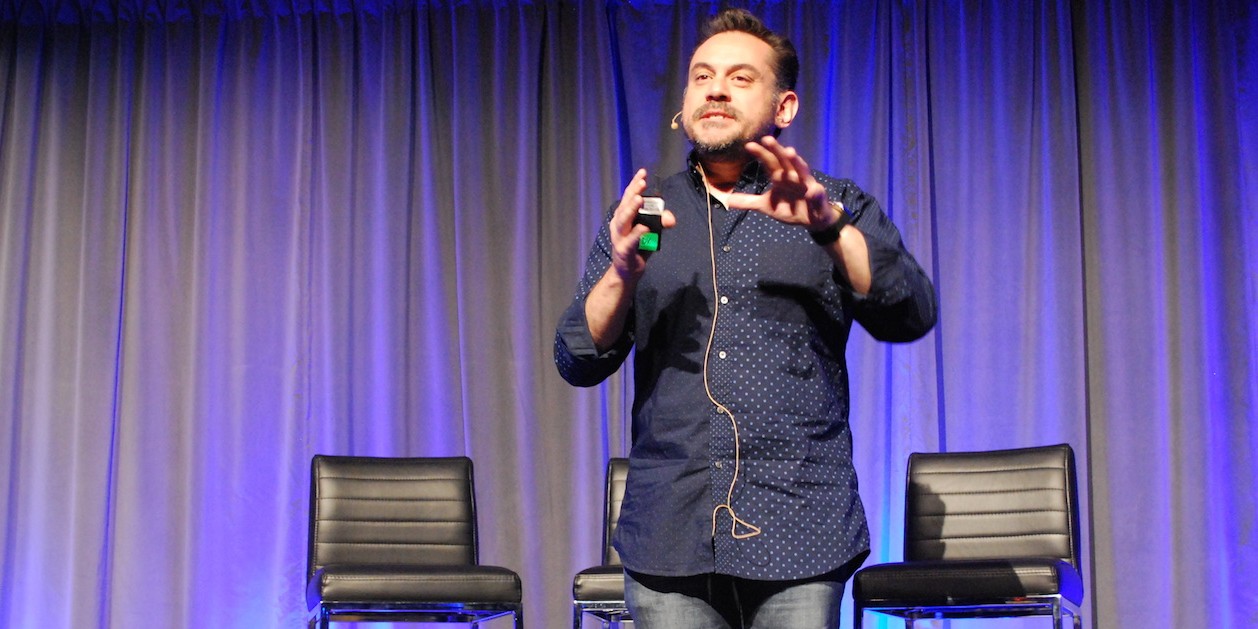Marketing hosted the first ever Marketing Evolution Summit in Toronto last week. Curated for the room of high level marketers, presentations focused on big ideas and the massive changes uprooting the industry.
Here are five key takeaways from the day.
The days of sitting back and watching are over
In his opening keynote, OMERS Ventures CEO John Ruffolo had an important message for the CMOs in the room: he’s coming for their customers. Firms like OMERS, he said, are funding young companies that use tech to deliver better products, customer service and pricing than established giants.
Ruffolo listed a familiar example: the taxi industry wasn’t servicing the needs of the consumer and Uber swallowed its customers. Similar disruptions are happening in nearly every industry and the new role of the marketer, he said, is to respond to change aggressively, move quickly and anticipate disruption by watching change in other markets. “The days of sitting back and watching are over,” he said. “The riskiest strategy that you can have is to wait.”
Ownership doesn’t matter
What today’s consumers want, according to former NowPublic CEO Leonard Brody, is the experience of ownership rather than actually owning something. He said companies like AirBnB, Uber and Skype show what consumers actually care about is access.
As experiences become more important, customer service becomes even more critical. We’re moving into an age, Brody said, when customer support will become the most central piece of marketing. If brands don’t nail the frontline experience, they’ll quickly bleed customers to incumbents. “Not getting it right is a massive critical failure.”
You have to adapt to win
As customers change, brands have to change along with them. In his talk about adaptation, Spotify Canada head of marketing Jamie Herbert cited GoPro’s successful transition to mainstream brand.
Early on, GoPro cameras were popular with adrenaline junkies – the type of consumers who would strap a GoPro on and film themselves snowboarding or surfing. As the brand grew, it noticed people using the cameras to capture more everyday experiences, like their children running around the house. GoPro quickly incorporated new everyday use-cases into its marketing, effectively welcoming those new consumers into the fold and making them part of its brand identity.
You can’t change the future, but you can shape it
When faced with change, it’s up to marketers to find new markets. Idris Mootee, the global CMO of HTC, echoed the other speakers, nodding to a shift in every single industry, from media to cable, airlines and hospitality. With each shift, he said, comes an opportunity to target a new market segment or, better yet, to invent a new segment.
For HTC, he said it has been important to spot the shift of consumers slowly switching to lower cost smartphones, then offer and market high quality phones in the mid-range and undercut Apple on price. On the tech side, HTC has also invested in virtual reality, finding both a new market to target and a new way to shine up its reputation as a technology leader.
Employee culture matters
Employee culture is powerful. In his talk on employees and their place in the marketing world, Stan Slap, the CEO of Slap Company, laid it out clearly: the success of any strategy depends on buy-in from employees. “If your employee wants something to happen it will, if it doesn’t, it won’t,” he said.
How can business leaders gain that buy in? They have to earn it, Slap said. Ads don’t work on employees – they have to be convinced with real actions. “You can’t bribe or bully an employee culture,” he said. “But you can take comfort from realizing the employee culture is rational. It’s solely concerned about its survival and emotional prosperity.”











